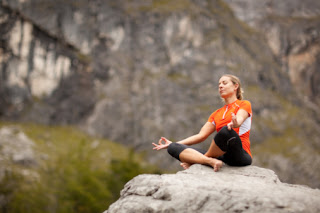By Gopi Rao
Creating inner peace is the beginning of spreading world peace. Many attempts have been made to describe yoga using analogies.
While each of these provides some benefit in helping the curious to understand
yogic philosophy and methodology, no single analogy can adequately describe the physical and
spiritual aspects of this ancient art. In order for a complete understanding of
what yoga is - it is necessary to experience it for oneself.
Controlled breathing is a fundamental pillar of the yogic tradition. All
yoga styles and postures incorporate breathing to some degree. Additionally
some of the most powerful yogic exercises consist of breathing methods alone.
Pranayama is the yogic art of breathing. Through intensive focus
on the breath, students of yoga are able to attain deeper meditative and
contemplative states. When practicing pranayama, yoga practitioners learn to
shut out the world and all of its distractions. Essentially pranayama opens the
door to a world without worries or concerns save for concentrating on what is
in front of you at the moment.
Gaining a glimpse of such a world is a reward in and of itself.
Of course, students of yogic science would hardly practice yoga so eagerly if
the only benefits from it came during their exercises. What teaching the mind
to focus intently actually does is train the mind to become a far better tool.
Beyond the yoga school, pranayama allows those who practice it
to look at the world as it truly is; not how it appears to be. Recognizing that
we see the world at most times through the lens of our perception, consider
yogic pranayama as a way of cleaning some of the distortion off of this lens.
The human mind is at heart chaotic. The natural instinct when
faced with a problem is the fight or flight response. While this split second decision-making
served us well in the primitive state, it is far less effective in modern
society.
In modern society, the fight or flight reaction is seldom the
best way to handle things. Paradoxically, today's society bombards us with more
impulses than at any time in history. Simply take a walk outside and you'll
easily be able to prove this to yourself.
Yogic methodology recognizes that the human mind is prone to snap decision-making
and anxiety. What it also recognizes is that the human mind is infinitely
malleable. Given enough time, any mind can be trained to see things in a better
way. The beginning of yogic wisdom is controlling the breath.
© Copyright 2013 – Aura Wellness Center – Publications Division
See videos, demonstrations, and lectures related to online yoga teacher certification programs and specialized continuing education courses.

